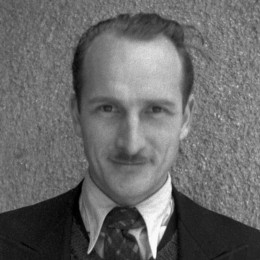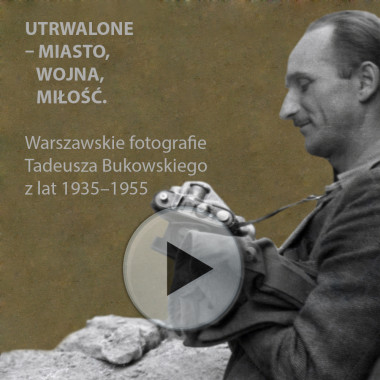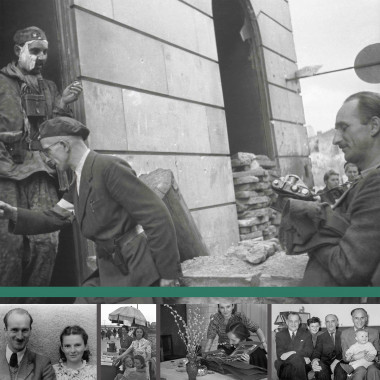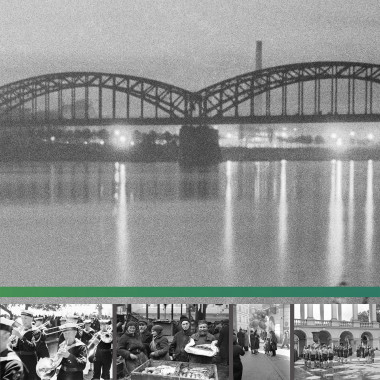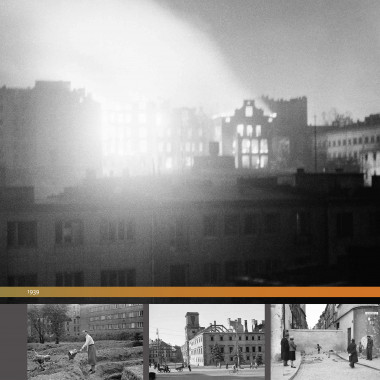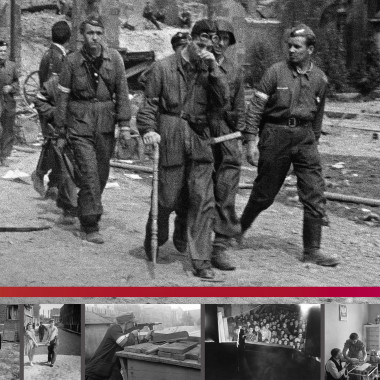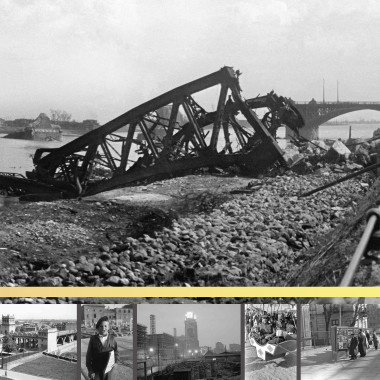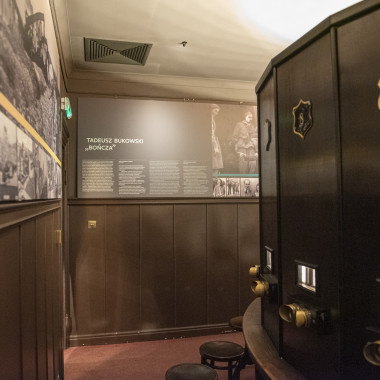The author of the exhibited photos, Tadeusz Bukowski alias „Bończa” (1909–1980), was a photo reporter of the Bureau of Information and Propaganda of Home Army Headquarters, as well as a scout instructor, a pedagogue and an artist photographer.
Born in Warsaw; graduated from teacher’s training college and worked as a school teacher since 1928. A member of the Polish Photographers’ Association, in charge of the Photography Department of the Polish Scout Association. During the occupation, he organized the underground scout movement.
After the war he worked as a photographer at Nasza Księgarnia publishing house and was a social activist- during the difficult Stalinism period he was a co-founder of the Polish Artist Photographers’ Association.
Persuaded by his friends, in 1979 he prepared an exhibition devoted to the Warsaw Rising, based on the photos he had taken during it. The exhibition travelled around Poland and was displayed as many as seven times. In 1980, an album containing Bukowski’s photos of the Rising was published, entitled “Warsaw in the days of the Rising of 1944”.
Preserved – city, war, love. Warsaw photos by Tadeusz Bukowski from 1935–1955
The exhibition of Warsaw photographs by Tadeusz Bukowski at Kaiserpanorama of Warsaw, prepared for the celebrations of the 75th anniversary of the Warsaw Rising was a presentation of a new collection of over 1800 frames within the archives of the Warsaw Rising Museum. In the oculars of Kaiserpanorama, we presented 48 dramatic images from the period of the German occupation and the Warsaw Rising.
However, the artistic legacy of the photo reporter of the Bureau of Information and Propaganda of Home Army Headquarters includes more than images from the Rising. The images document in a unique manner the changes which had taken place in the capital city between 1935 and 1955. We thus invite you on a journey though the unique climate of the Second Polish Republic, and then through the period of German occupation and the Warsaw Rising, which ends in the demolished, but reviving post-war capital. The key to the exhibition are the author’s returns to the same locations, which had been completely transformed over the course of twenty years, as well as expressive portraits of Warsaw inhabitants, including the author’s favorite motif of children portraits.





